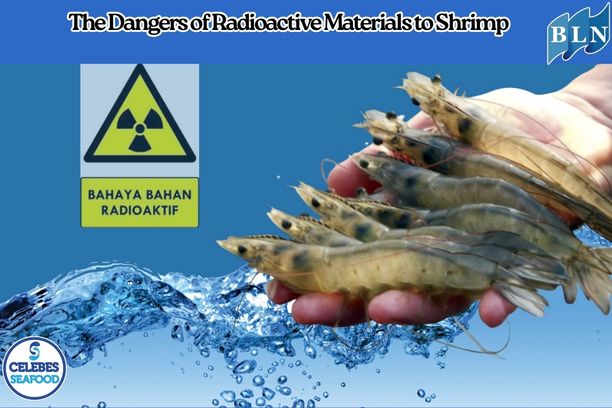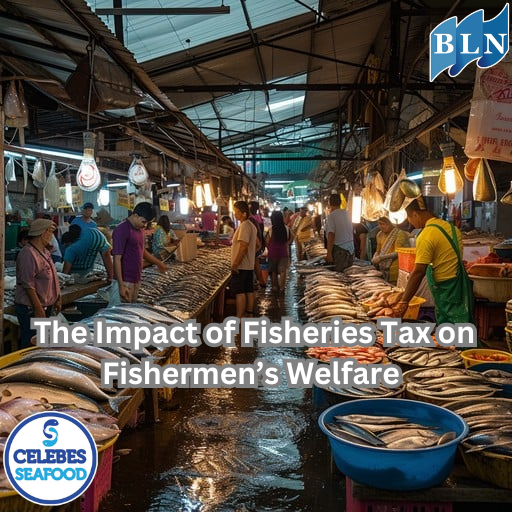Diversity and Pathogenicity of Vibrio sp. in Vannamei Shrimp Ponds
By. Azizah - 28 May 2025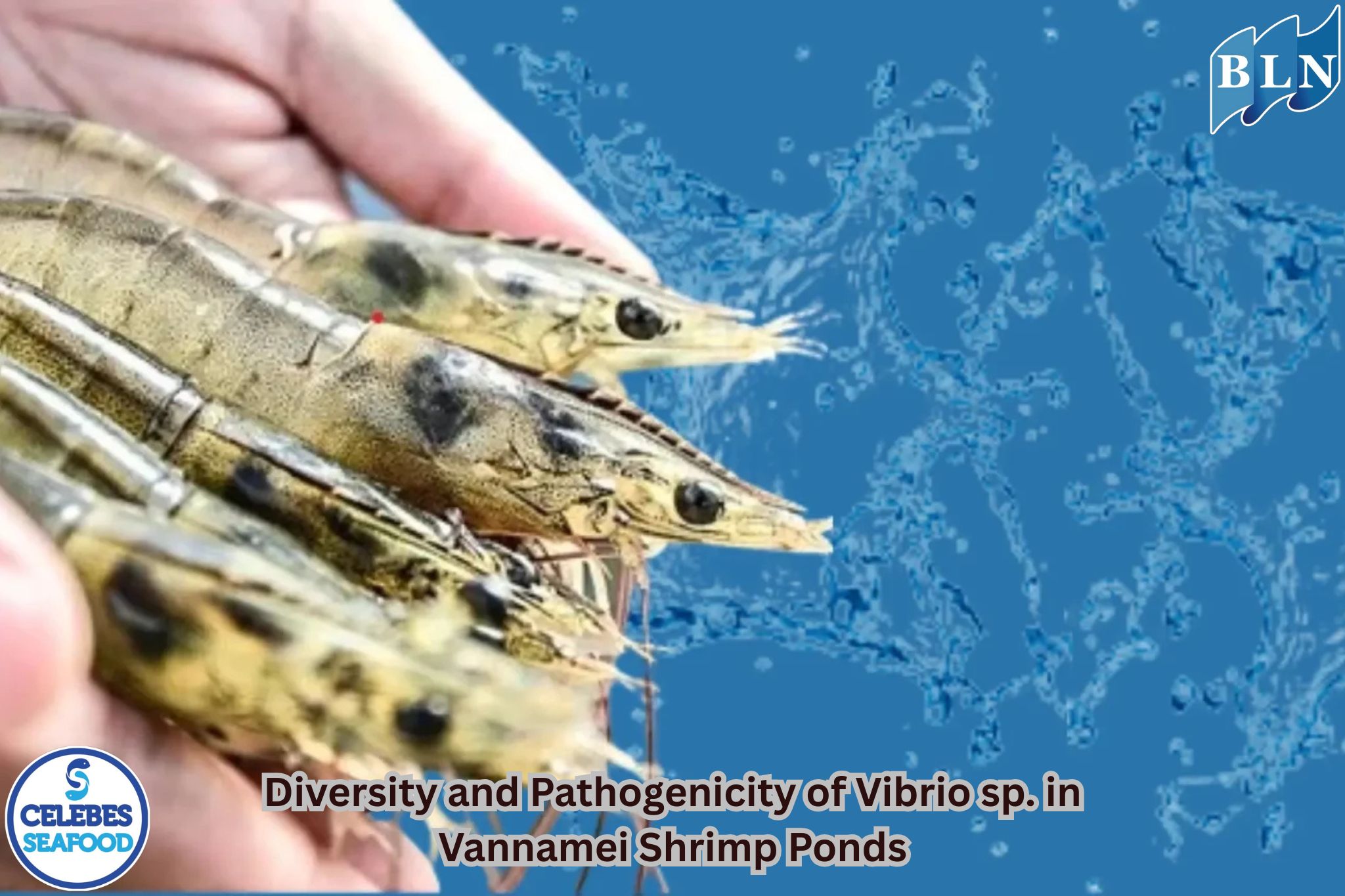
lautnusantara.comThe cultivation of vannamei shrimp (Litopenaeus vannamei) has become the backbone of the global aquaculture industry due to its rapid growth and adaptability. However, the success of this cultivation is often threatened by various diseases, with bacterial infections from the genus Vibrio being one of the main causes of significant economic losses. Vibrio sp. are Gram-negative, facultative anaerobic, and motile bacteria naturally abundant in aquatic environments, including shrimp ponds. The high diversity of Vibrio species in pond environments and their potential pathogenicity to vannamei shrimp make them a crucial subject of research and concern.
Diversity of Vibrio Species in Vannamei Shrimp Ponds
Shrimp pond environments, with high biomass density and organic matter accumulation, provide ideal conditions for the proliferation of various Vibrio species. This diversity can be influenced by many factors, such as salinity, water temperature, pH, water quality, and cultivation management practices. Some Vibrio species commonly identified in vannamei shrimp ponds include:
-
Vibrio parahaemolyticus: This species is well-known for its association with Acute Hepatopancreatic Necrosis Disease (AHPND), also known as Early Mortality Syndrome (EMS). Pathogenic AHPND strains produce PirA/PirB toxins that cause severe damage to the shrimp's hepatopancreas, leading to mass mortality in a short period.
-
Vibrio harveyi: An opportunistic pathogen causing vibriosis, a disease characterized by cuticular lesions, necrosis, and mortality. V. harveyi can also cause luminescent vibriosis in shrimp larvae.
-
Vibrio alginolyticus: Although often considered commensal, V. alginolyticus can become an opportunistic pathogen, especially in stressed shrimp or under poor environmental conditions. This bacterium is often associated with infections of the gills and appendages.
-
Vibrio campbellii: This species has also been reported as a cause of vibriosis in shrimp, showing similar symptoms to V. harveyi infections.
-
Vibrio vulnificus: While better known as a human pathogen, some studies suggest V. vulnificus can also infect shrimp, although its prevalence might be lower compared to other Vibrio species.
Identification and characterization of these Vibrio species are crucial for understanding disease dynamics and developing effective prevention strategies. Molecular techniques such as PCR, 16S rRNA gene sequencing, and Multilocus Sequence Typing (MLST) are increasingly used for more accurate identification and phylogenetic studies.
Pathogenicity of Vibrio sp. in Vannamei Shrimp
The pathogenicity of Vibrio sp. to vannamei shrimp varies greatly among species and even among strains within a single species. Pathogenicity mechanisms generally involve the production of various virulence factors, including:
-
Toxins: Most pathogenic Vibrio produce toxins, such as the PirA/PirB toxins in AHPND V. parahaemolyticus, hemolysins, and cytolysins that damage host cells.
-
Extracellular Enzymes: The production of enzymes like proteases, amylases, and lipases helps bacteria degrade host tissues and acquire nutrients.
-
Adhesins: Surface proteins that allow bacteria to attach to host cells, initiating the process of colonization and infection.
-
Type III (T3SS) and Type VI (T6SS) Secretion Systems: Some Vibrio strains possess these complex secretion systems to inject effector proteins directly into host cells, disrupting cellular functions and the shrimp's immune response.
-
Biofilm Formation: Vibrio can form biofilms on pond surfaces, equipment, or even on shrimp bodies. Biofilms protect bacteria from antibiotics and the host immune system, serving as a persistent source of infection.
-
Quorum Sensing: This cell-to-cell communication system allows Vibrio to detect their population density and coordinate the expression of virulence genes when the population reaches a certain threshold, enhancing their pathogenic potential.
Clinical signs of Vibrio infection in vannamei shrimp vary depending on the Vibrio species, severity of infection, and shrimp condition. Common symptoms include:
-
Pale and atrophied hepatopancreas (especially in AHPND).
-
Lethargy and loss of appetite.
-
Body discoloration (red or dark).
-
Cuticular lesions or ulcers.
-
Gill damage.
-
Rapid mass mortality.
Control and Prevention Strategies
Given the serious threat posed by Vibrio sp., effective pond management and comprehensive prevention strategies are essential. These include:
-
Strict Water Quality Management: Regular monitoring and control of water quality parameters (temperature, salinity, pH, dissolved oxygen, ammonia, nitrite, nitrate) to create an environment unfavorable for the growth of pathogenic Vibrio.
-
Biosecurity: Implementing strict biosecurity practices, including water and equipment disinfection, pest and vector control, and quarantine of new shrimp to prevent pathogen entry.
-
Probiotic Use: Probiotics containing beneficial bacteria (e.g., Bacillus sp. or Lactobacillus sp.) can suppress the growth of pathogenic Vibrio through nutrient competition, production of antibacterial compounds, or stimulation of the shrimp's immune system.
-
Prebiotic and Immunostimulant Use: Prebiotics (e.g., oligosaccharides) can support the growth of beneficial bacteria in the shrimp gut, while immunostimulants (e.g., beta-glucans) can enhance the shrimp's immunity to infection.
-
Vaccination: Although still in the development stage, vaccination of shrimp against pathogenic Vibrio shows potential as a long-term prevention strategy.
-
Feed Management: Providing high-quality feed in appropriate dosages to avoid the accumulation of organic matter at the pond bottom, which can trigger Vibrio growth.
-
Bacteriophage Utilization: Bacteriophages, viruses that specifically infect bacteria, show potential as biocontrol agents against pathogenic Vibrio.
-
Herbal Plant Use: Some herbal plant extracts exhibit antibacterial activity against Vibrio and can be used as feed supplements.
-
Shrimp Genetics: Breeding shrimp resistant to specific diseases, including Vibrio infections, can be a long-term approach.
If you are interested in our SLIPPER LOBSTER MEAT, SLIPPER LOBSTER WHOLE ROUND please do not hesitate to contact us through email and/or whatsapp.
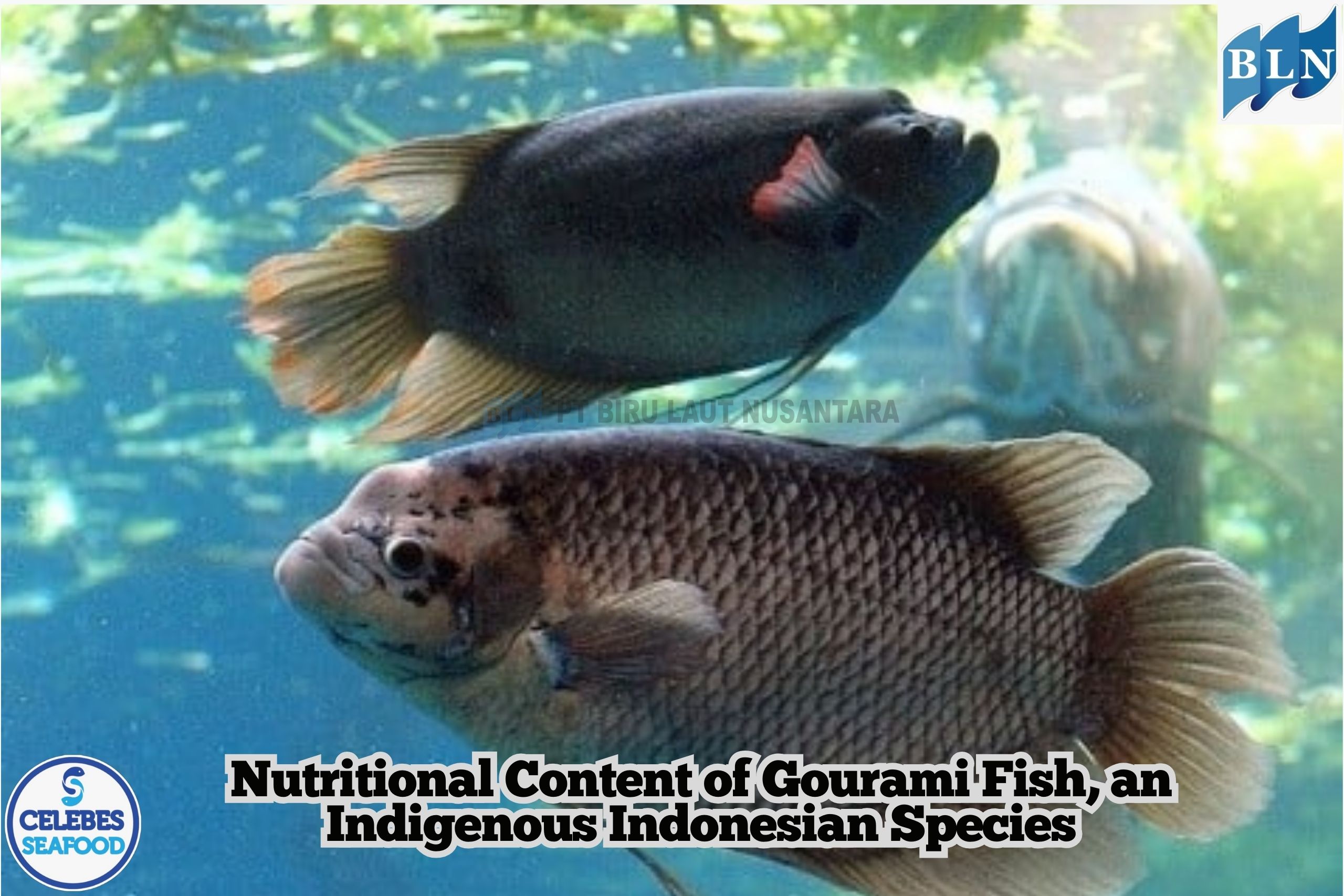
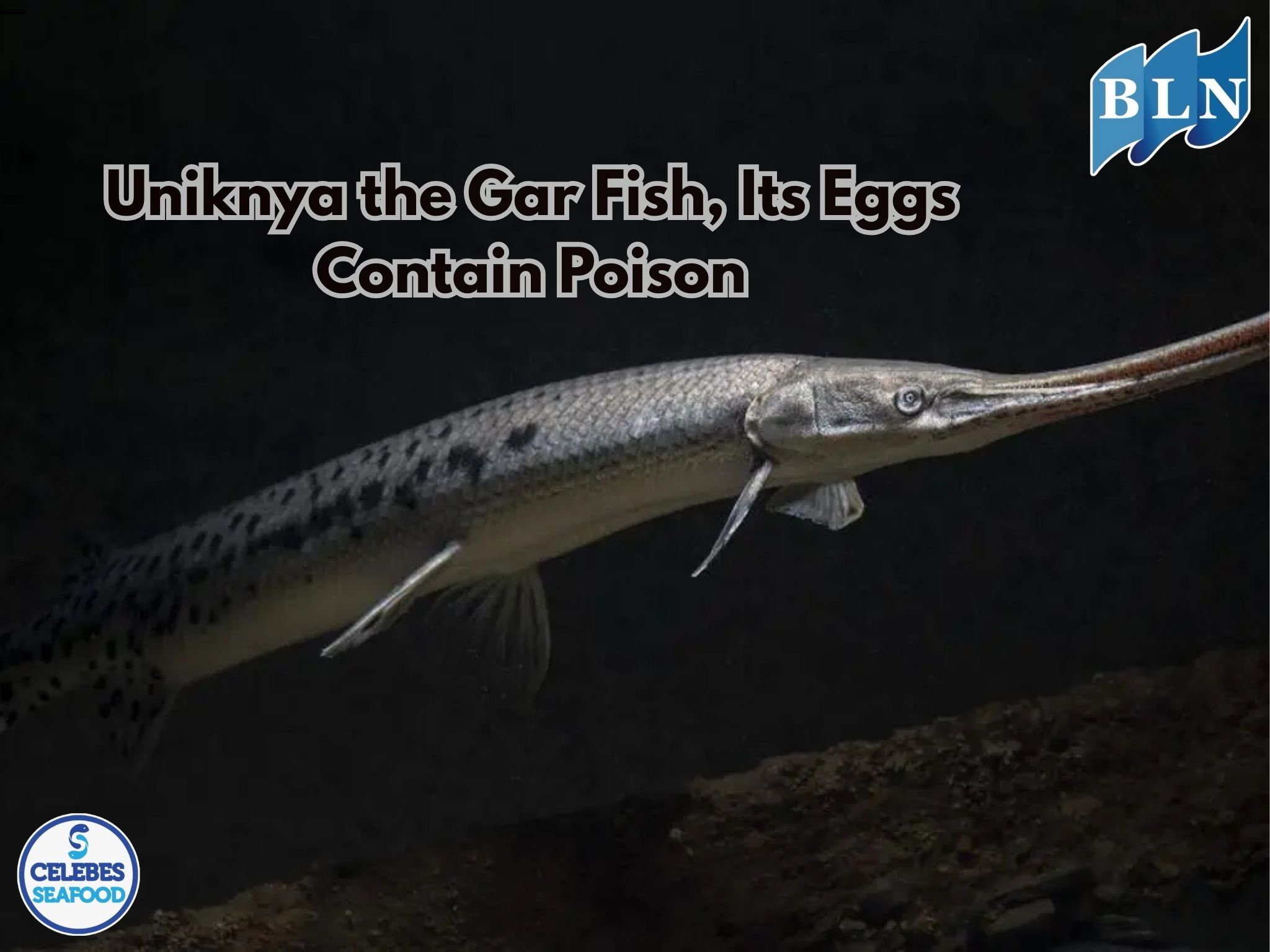
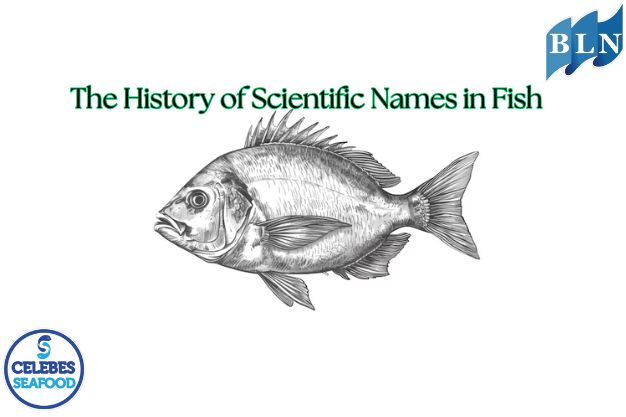
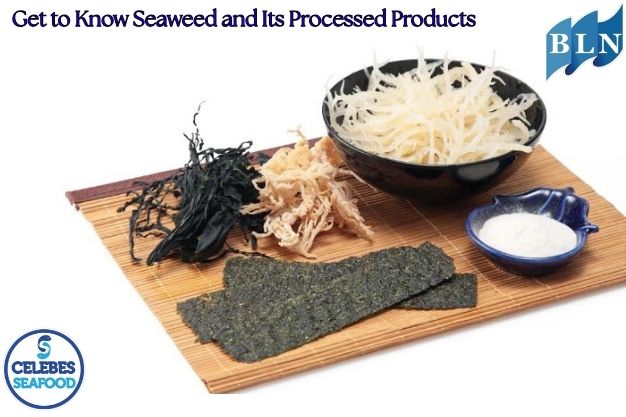

 in Ball Shape (Balltype) for Export.jpg)
.jpg)
